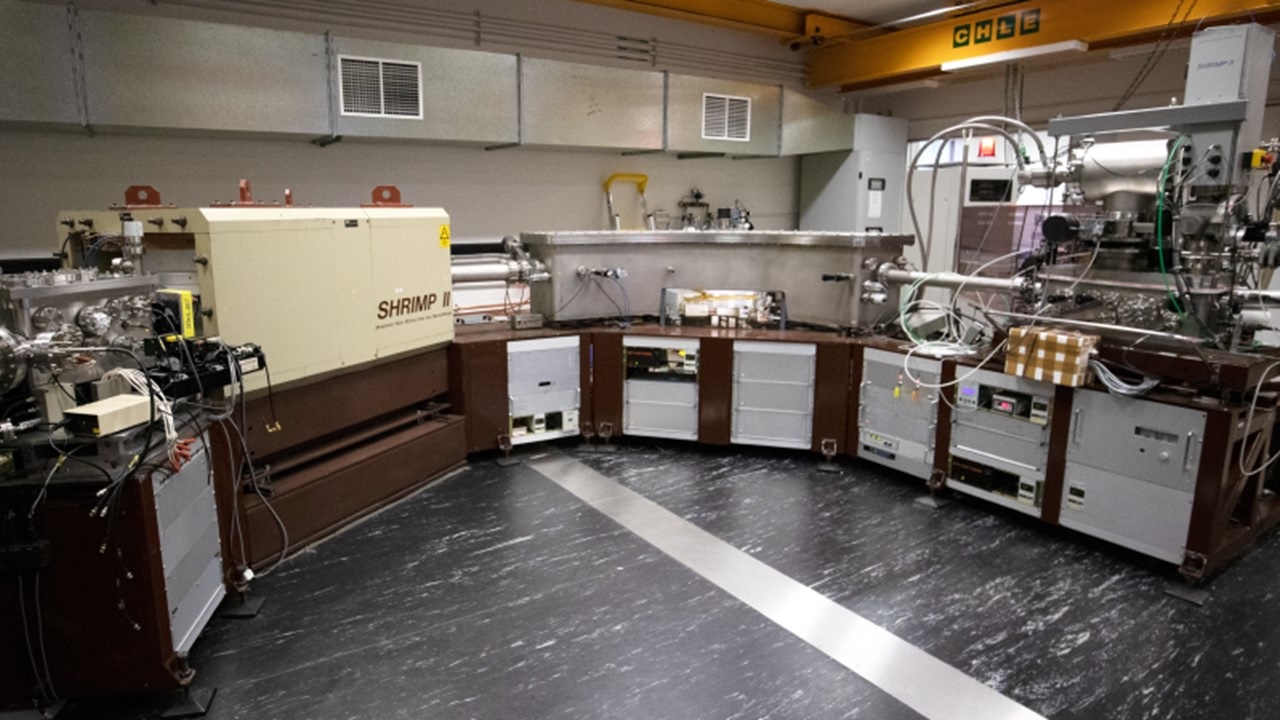
Sensitive High Resolution Ion Microprobe (SHRIMP)
The Sensitive High Resolution Ion MicroProbe (SHRIMP) is a mass spectrometer used for in-situ analysis of geological materials.
Research themes
Content navigation
Visit the websiteAbout
The Sensitive High Resolution Ion Microprobe (SHRIMP) is a mass spectrometer used for in-situ analysis of solids, especially geological materials. Developed at ANU, SHRIMP has revolutionised geochronology and is an important tool for understanding early Earth history. Recent developments of the SHRIMP-SI have make it world-leading in the analysis of O, C and S isotopes to understand past environments.
SHRIMP is typically used for determining ion ratios in geologic materials. Probe pits are typically 10-30 µm in diameter and a few micrometers deep. As such SHRIMP allows virtually nondestructive in-situ isotopic analysis of geologic materials. Such materials include polished grain mounts and thin sections. Samples are generally characterized with visual and electron imaging prior to analysis.
Applications include U-Pb geochronology, trace element geochemistry, stable isotope analysis, and measurement of cosmochemical effects in extraterrestrial samples. Three SHRIMP instruments are currently in use (SHRIMP SI, II, RG).
For more information visit the Sensitive High Resolution Ion Microprobe (SHRIMP) website.
Location
Jaeger 5 Building
Research School of Earth Sciences
Acton, 2601
